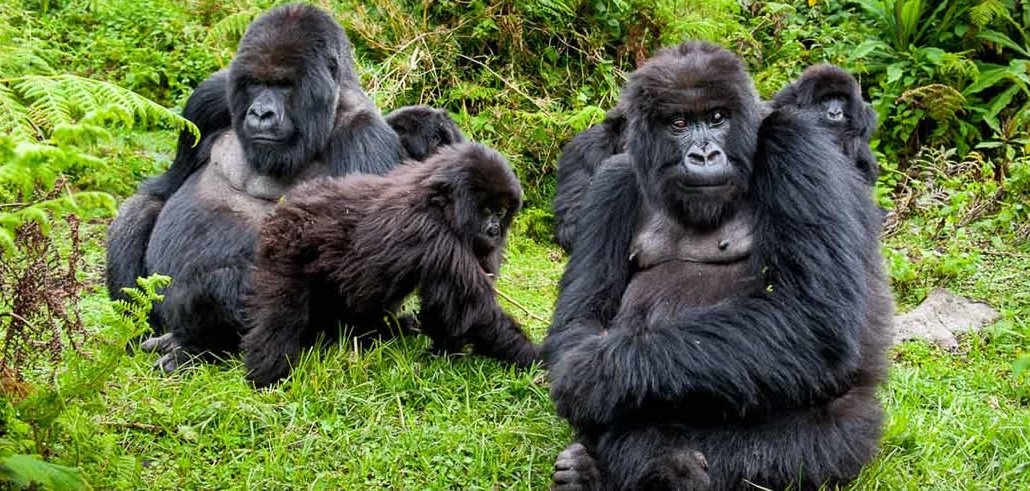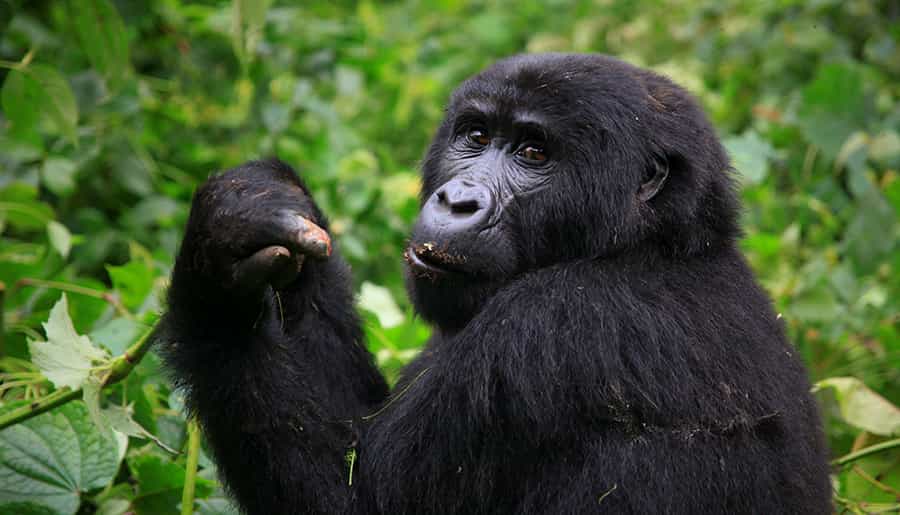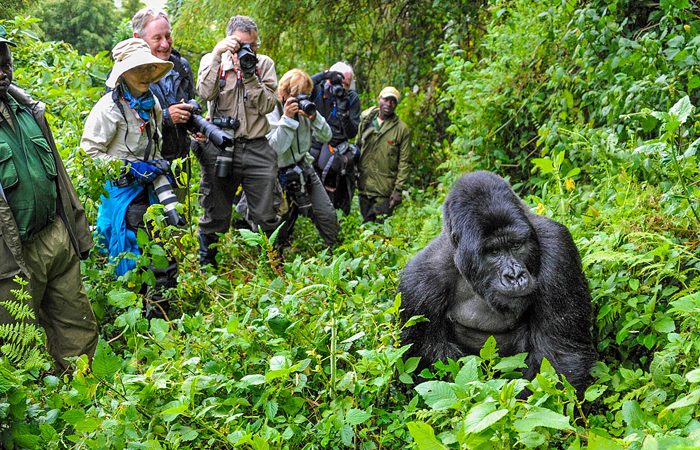
Gorilla Habituation in Uganda
Gorilla Habituation in Uganda inside Bwindi Impenetrable National Park: A Fascinating Journey into the Lives of Mountain Gorillas.
Bwindi Impenetrable National Park in Uganda is renowned for its rich biodiversity and, most notably, its population of critically endangered mountain gorillas. One of the most unique and awe-inspiring experiences for wildlife enthusiasts and conservationists alike is the gorilla habituation process that takes place within this pristine forest. In this blog, we will delve into the captivating world of gorilla habituation, exploring the process, its significance in conservation efforts, and the incredible opportunities it offers to connect with these magnificent creatures.
Gorilla Habituation in Uganda

Understanding Mountain Gorillas
Mountain gorillas (Gorilla beringei beringei) are one of the two subspecies of eastern gorillas and are native to the Virunga Mountains that straddle the borders of Uganda, Rwanda, and the Democratic Republic of Congo (DRC). These gentle giants are among the world’s most endangered animals, with an estimated population of just over 1,000 individuals left in the wild.
Gorilla Habituation: What Is It?
Gorilla habituation is a process through which wild mountain gorillas are gradually acclimatized to the presence of humans. Unlike traditional gorilla trekking, which involves visiting already habituated gorilla groups for a limited time, gorilla habituation provides an opportunity to spend an extended period in the presence of wild gorillas, allowing researchers and conservationists to observe their natural behaviors up close. Here’s a detailed breakdown of the gorilla habituation process:
- Identifying Suitable Gorilla Groups. The first step in gorilla habituation is identifying a suitable group of wild gorillas for habituation. This typically involves selecting a group that frequents an area accessible to researchers and tourists.
- Building Trust. The process begins by slowly introducing the gorilla group to the presence of human observers. At first, researchers may maintain a significant distance to avoid alarming the gorillas. Gradually, they reduce the distance, all the while ensuring that the gorillas do not perceive humans as threats.
- Increasing Contact Time. Over several visits, researchers spend increasingly longer periods of time with the gorilla group. This helps the gorillas become accustomed to human presence and reduces their stress levels.
- Reducing Aggressive Behaviors. Initially, gorillas may exhibit signs of aggression or discomfort when humans are nearby. Through patient and non-threatening interactions, these behaviors are minimized.
- Minimizing Disturbance. Researchers aim to minimize the impact of human presence on the gorilla group’s natural behaviors. This includes maintaining a low profile, avoiding direct eye contact, and speaking in hushed tones.
- Full Habituation. The ultimate goal of the habituation process is for the gorilla group to become fully habituated. This means them get comfortable with human presence and exhibit natural behaviors without disturbance.
Gorilla Habituation in Uganda

The Significance of Gorilla Habituation
Gorilla habituation is of paramount importance for several reasons:
- Research. Habituated gorillas provide researchers with a unique opportunity to study their behaviors, social structures, as well as ecology. This knowledge is invaluable for conservation efforts and scientific understanding.
- Conservation. By habituating gorillas, conservationists can monitor their health, assess threats, and implement measures to protect them effectively. This contributes to the long-term survival of the species.
- Tourism. Habituated gorilla groups eventually become available for gorilla trekking, which is a significant source of revenue for conservation and local communities. It also fosters public awareness and support for conservation.
Book your Gorilla Habituation Permit
Visiting a Gorilla Habituation Experience
To visit a gorilla habituation experience in Bwindi Impenetrable National Park, you will need to make arrangements with a recognized tour operator. Here’s what to expect during your visit:
- Early Morning Start. The day begins early as you meet your guide and trek into the dense forest to locate the habituated gorilla group.
- Extended Interaction. Unlike regular gorilla trekking, you will have several hours to observe and interact with the gorillas, witnessing their daily activities, interactions, and possibly even young gorillas at play.
- Limited Group Size. To minimize disturbance to the gorillas, group sizes for habituation experiences are typically smaller than those for regular trekking, ensuring a more intimate encounter.
- Professional Guides. Knowledgeable guides and trackers will accompany you, providing insights into gorilla behavior and ensuring your safety.
- Respectful Behavior. Visitors are expected to maintain a respectful distance from the gorillas, follow guidelines provided by guides, and minimize noise and disturbance.
Gorilla Habituation in Uganda
Conclusion
Gorilla habituation in Bwindi Impenetrable National Park offers a remarkable opportunity to connect with one of the world’s most endangered and awe-inspiring creatures. It is a journey into the heart of gorilla conservation, providing researchers with vital insights and tourists with unforgettable memories. As we continue to strive for the conservation of these magnificent animals, gorilla habituation remains a crucial step in ensuring the survival of mountain gorillas for generations to come.






